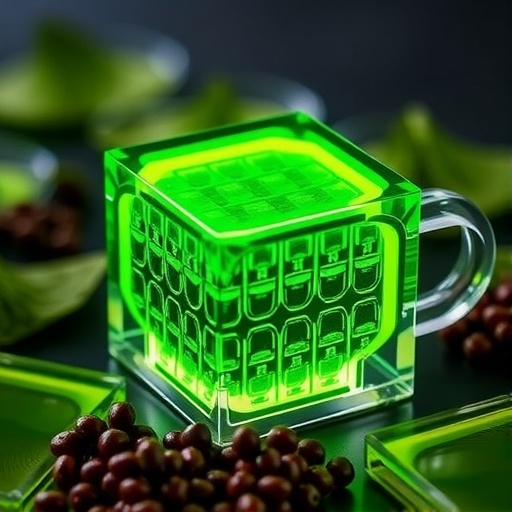In a groundbreaking advancement for the sustainable management of lithium-ion batteries, researchers from the Institute of Solid State Physics at the Hefei Institutes of Physical Science, Chinese Academy of Sciences, alongside teams from Shenzhen International Graduate School of Tsinghua University and Suzhou University of Technology, have pioneered a novel method to directly regenerate aged LiFePO₄ cathode materials from retired electric vehicle batteries. Departing from traditional recycling paradigms, this approach harnesses natural electron donors, specifically tea polyphenols, to facilitate a low-cost, energy-efficient, and eco-friendly rejuvenation process for degraded cathodes.
The proliferation of lithium-ion batteries in new energy vehicles has surged dramatically, driven by the global push toward renewable energy and emission reductions. However, this rapid adoption has led to a parallel increase in retired battery stockpiles, raising serious environmental and resource sustainability challenges. Conventional recycling techniques, predominantly hydrometallurgical and pyrometallurgical processes, primarily recover valuable metals but fall short economically and environmentally when applied to lithium iron phosphate (LiFePO₄) cathode materials. In particular, these processes cannot efficiently restore cathode functionality, resulting in resource wastage and increased ecological footprints.
Contrary to extracting metal elements alone, direct regeneration technology focuses on healing the cathode’s material structure, restoring its electrochemical performance without dismantling it to the elemental level. The pioneering work published in Advanced Materials introduces an innovative strategy utilizing tea polyphenols, naturally extracted compounds known for their electron-donating abilities, to reverse the degradation in LiFePO₄ cathodes. This biological electron donor initiates a reduction process that converts degraded FePO₄ phases back into functional LiFePO₄, while simultaneously mitigating defect sites that impede lithium-ion mobility.
At the core of this regeneration technique is the synergistic interplay between hydroxyl-based electron donors present in tea polyphenols and supplemental lithium salts. This combination restores the original stoichiometry and crystalline architecture of LiFePO₄ while repairing lithium-iron anti-site defects—where iron ions improperly occupy lithium ion sites, causing diffusion bottlenecks. The method effectively reconstructs the lattice and reestablishes rapid lithium ion diffusion pathways critical for high-rate battery performance.
Moreover, the study addresses a vital challenge regarding the damaged or missing conductive carbon layers that typically coat LiFePO₄ particles and facilitate electron transport. The researchers introduced an aluminum source during regeneration, which reacts to form a composite surface coating composed of amorphous aluminum phosphate (AlPO₄) and lithium phosphate (Li₃PO₄). This coating selectively deposits on damaged regions due to strong AlPO₄ – LiFePO₄ interactions, restoring the surface integrity and re-establishing dual ion-electron transport channels. Notably, these phosphate compounds act as fast lithium-ion conductors, complemented by residual carbon, collectively enhancing the cathode’s rate capability and electrochemical stability.
Incorporating aluminum into the bulk cathode matrix also provides a structural enhancement by partial doping, which fortifies the framework against iron ion migration. This ion migration, often a root cause of capacity fading and shortened battery lifespan, is effectively suppressed. As a result, the regenerated LiFePO₄ cathode exhibits extended cycling durability without compromising its intrinsic energy density, a crucial factor in maintaining battery performance for electric vehicle applications.
This natural electron donor-assisted direct regeneration protocol not only revitalizes the physical and chemical properties of spent LiFePO₄ cathodes but also aligns with the urgent global mandate for green and sustainable battery life cycle management. The technology circumvents high-energy demands and hazardous chemical waste typical of metallurgical methods, presenting a scalable solution that could significantly reduce recycling costs and environmental burdens.
The implications of this breakthrough extend beyond environmental benefits; the restoration of cathode materials at a molecular level opens pathways to innovative battery design and recycling systems. Such regenerative strategies have the potential to transform the lithium-ion battery industry by closing the loop more effectively, allowing materials to be reused multiple times while preserving performance integrity, thus fostering a circular economy in energy storage technologies.
Furthermore, the multi-disciplinary collaborative approach combining chemistry, materials science, and environmental engineering highlights the importance of integrative research in tackling complex challenges within the energy sector. It exemplifies how bio-derived compounds can be leveraged for advanced material rejuvenation, bridging natural product chemistry with electrochemical engineering.
While still at a research stage, the method’s scalability and economic viability appear promising, especially considering the low-cost and abundant nature of the natural electron donors involved. Future directions include optimizing process parameters for industrial implementation and extending this regeneration strategy to other cathode chemistries suffering from structural degradation in retired batteries.
In summary, the research delineates a paradigm shift from resource-extractive recycling toward a restorative and restorative methodology in lithium-ion battery end-of-life management. This sustainable regeneration of LiFePO₄ cathodes via natural electron donors and targeted surface reconstruction stands as a beacon for next-generation recycling technologies, fostering environmental stewardship while supporting the global electrification movement.
Article Title: Direct Recycling of Degraded LiFePO4 Cathode Material via Natural Electron Donors Healing and Targeted Surface Reconstruction
News Publication Date: 13-Sep-2025
Web References: http://dx.doi.org/10.1002/adma.202511246
Image Credits: LIU Yuanyuan
Keywords
Physical sciences




